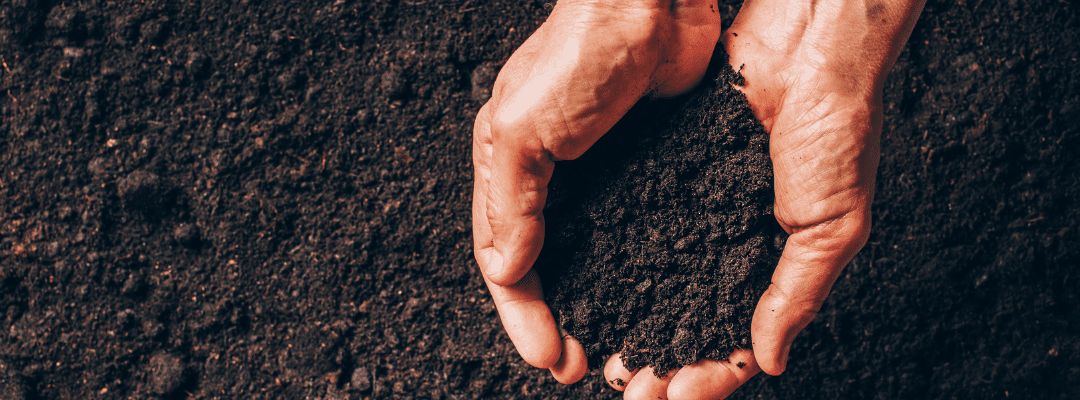Sustainability has become quite the buzzword throughout nearly every industry – including agriculture. Agriculture has been faced with the challenge of producing more for the growing population’s demand with less while also making eco-friendly decisions. With the goals of reducing emissions and our footprint on the planet, adopting innovative and sustainable practices and technologies is critical.
These challenges leave growers, researchers, product developers, and every other stakeholder, to seek and implement climate-smart alternatives. We’ve seen anywhere from advancements in precision ag technology to getting to the source with developing different variants of seeds to new methods of farming, all in the name of sustainability.
One of the biggest concerns surrounding emissions is the amount of carbon being released into the atmosphere. As we have grown in population, industrialization, and other contributing factors, we have seen a drastic growth in carbon dioxide (CO2) emissions. This is where the idea of “carbon farming” comes into the picture as a potential solution to the problem.
What is Carbon Farming?
So, what exactly does “carbon farming”, or carbon sequestration, mean? This agricultural method is a direct method in reducing agriculture’s carbon emissions and footprint. And the way it does so is exactly how it sounds. Carbon farming is implementing practices that are known to improve the rate at which CO2 is removed from the atmosphere and then stored in plant material and/or soils organic matter.
Carbon farming practices are management practices that sequester carbon while reducing emissions. And there’s an expansive variety (at least 35) of practices to choose from when implementing carbon sequestration that produce other co-benefits like increased water holding capacity, biodiversity, and just overall soil quality. Some of these methods include:
- Composting to bring nutrients – including carbon – into soil
- Growing Cover crops in the off-season to avoid bare fields and improve soils ability to store carbon
- Mulching (wood chips, straw, leaves, compost, groundcover plants) to protect and return biomass to the soil
- Following no till practices to replace conventional tillage
While these are just a few of the ways carbon sequestration can be done, they can be combined with one another or alone to nearly all of cropland. After covering some of the practices of carbon farming, how does technology fit into the picture?
The Role of Ag Technology
Better understanding our soil’s health and quality is an important first step in optimizing productivity and implementing new practices – like carbon farming. Leveraging today’s tools and technologies can provide a deeper understanding of what is happening at the root (literally) of your fields.
Ag drone technology allows you to dig deeper into soil performance with high-resolution imagery. But how does an eye-in-the-sky help with what lies beneath our plants? Aerial imagery allows you to get a big picture as well as a detailed look into soil quality and performance. Pairing with machine learning technology, the insights stemming from high-resolution imagery can help you understand anywhere from managing soil to understanding how water interacts with it.
Ag drone technology can indicate how much residue is covering the bare soil, which helps to inform soil management strategies. By sensing and recording reflective radiation with the help of multispectral imagery, you are better able to assess the soil – fueling decisions around carbon sequestration. Insight into residue cover can give an indication on how to:
- Manage erosion
- Conserve soil moisture
- Build and store soil organic matter
- Fuel critical decisions around soil management
Then with elevation and hydrology analytics, you’re able to uncover insights into how field or plot topography plays a role in how water flows and stores. In efforts to preserve nutrients in soil and limit potential runoff, knowing water’s behavior among your fields or plots is critical in limiting pollution and informing strategies.
Understanding soil health and waterflow can be valuable in limiting erosion, runoff, and informing decisions around which practices of carbon farming would be best for your situation. This technology works to determine areas of the field that are less susceptible to the effects from inadequate soil conditions.
The Results of Carbon-ating Your Fields
The main motivation behind carbon farming is offsetting emissions to combat issues stemming from climate change. However, carbon farming practices are not strictly related to climate change; they can also improve the overall quality of fields or plots while promoting productivity. By improving soil quality and content, it is also making the area more resilient to drought, flooding, and promotes a diverse and thriving landscape.
These impacts all assist in enhancing crop production and assist in increasing yield potential – which is a critical piece in today’s and the future’s needs. Carbon farming’s ability to optimize soil quality is not only good for productivity, but also minimizes other pollution seen with erosion and runoff. With poor water retention, the nutrient or other inputs runoff can contaminate local water sources, neighboring fields, etc.
Carbon sequestration has the power to transform the future of climate change while serving as a remedy to other challenges facing the world (i.e., the world food issue). While assisting in reducing carbon emissions it is promoting a more productive and sustainable method of agriculture. Leveraging climate-smart methods of farming similar to carbon farming pushes towards decreasing carbon emissions and mitigating climate change.


